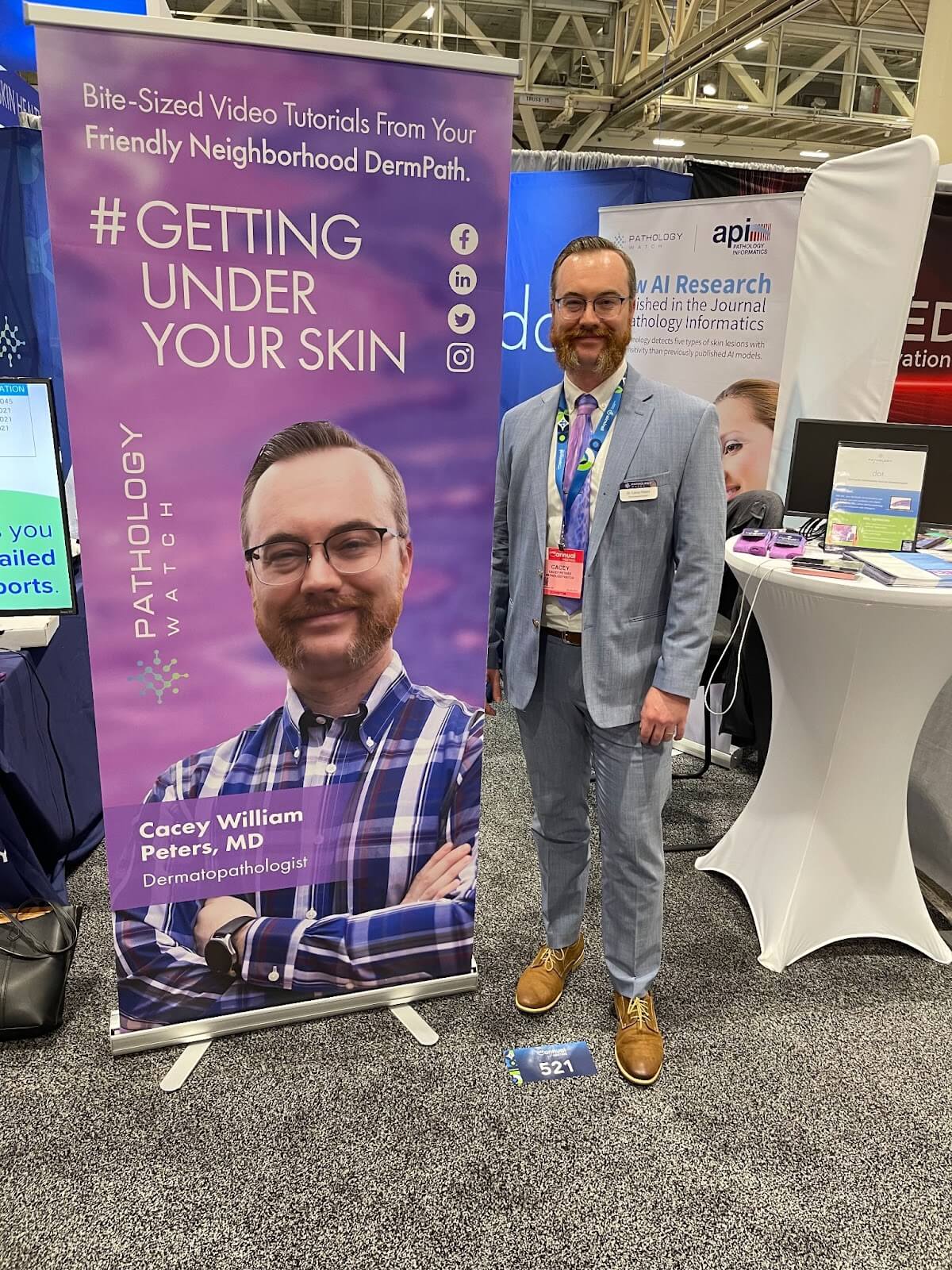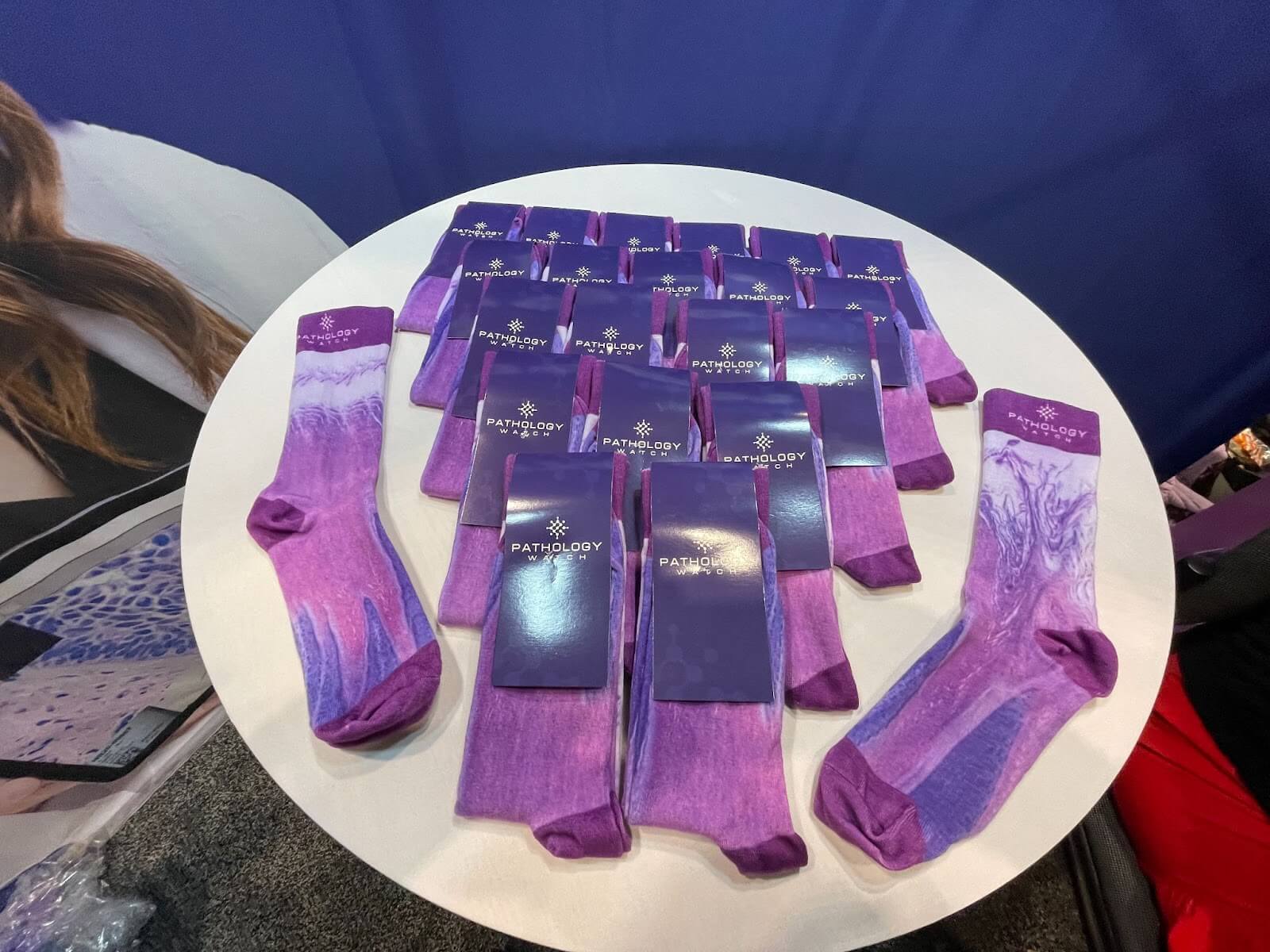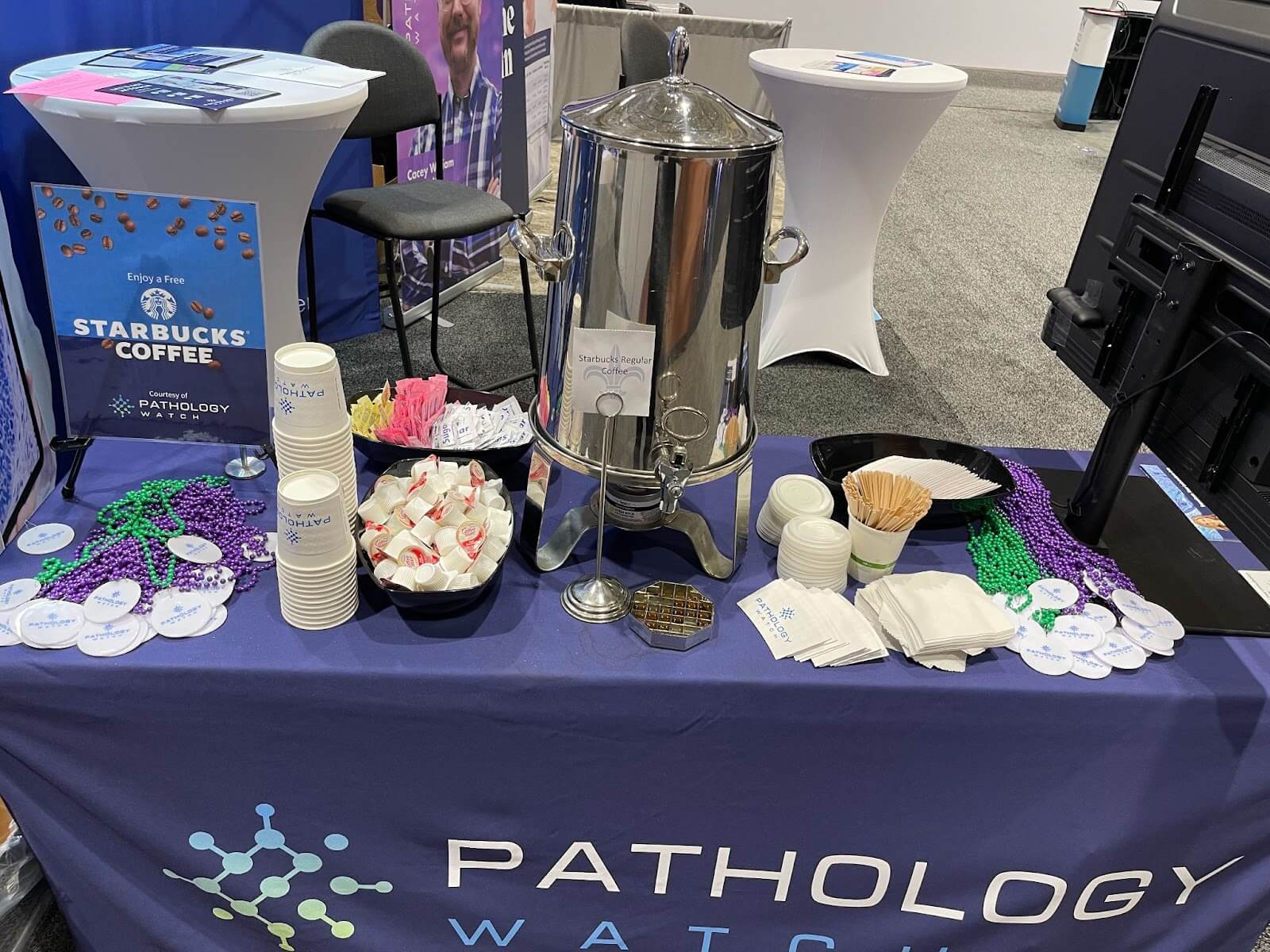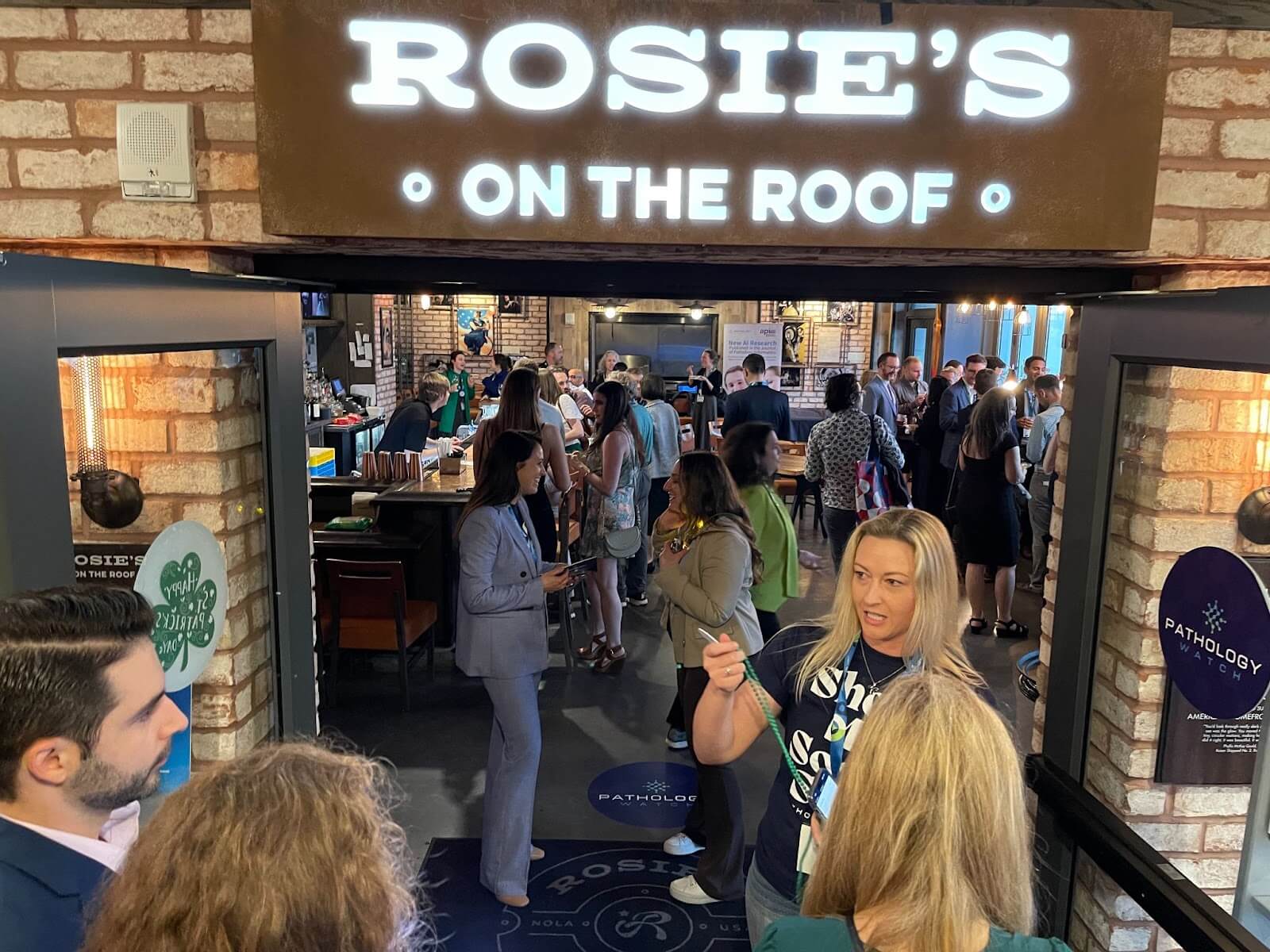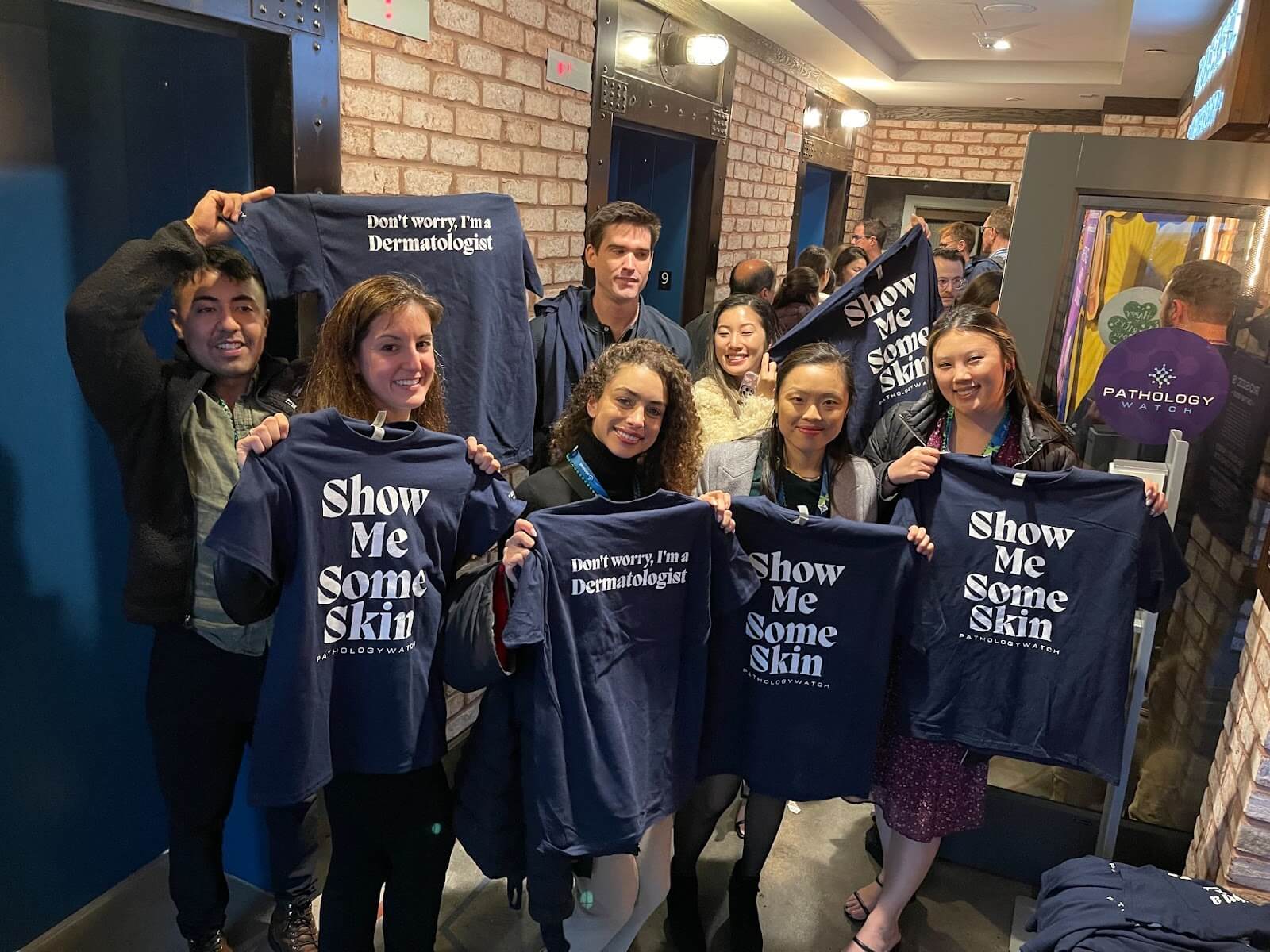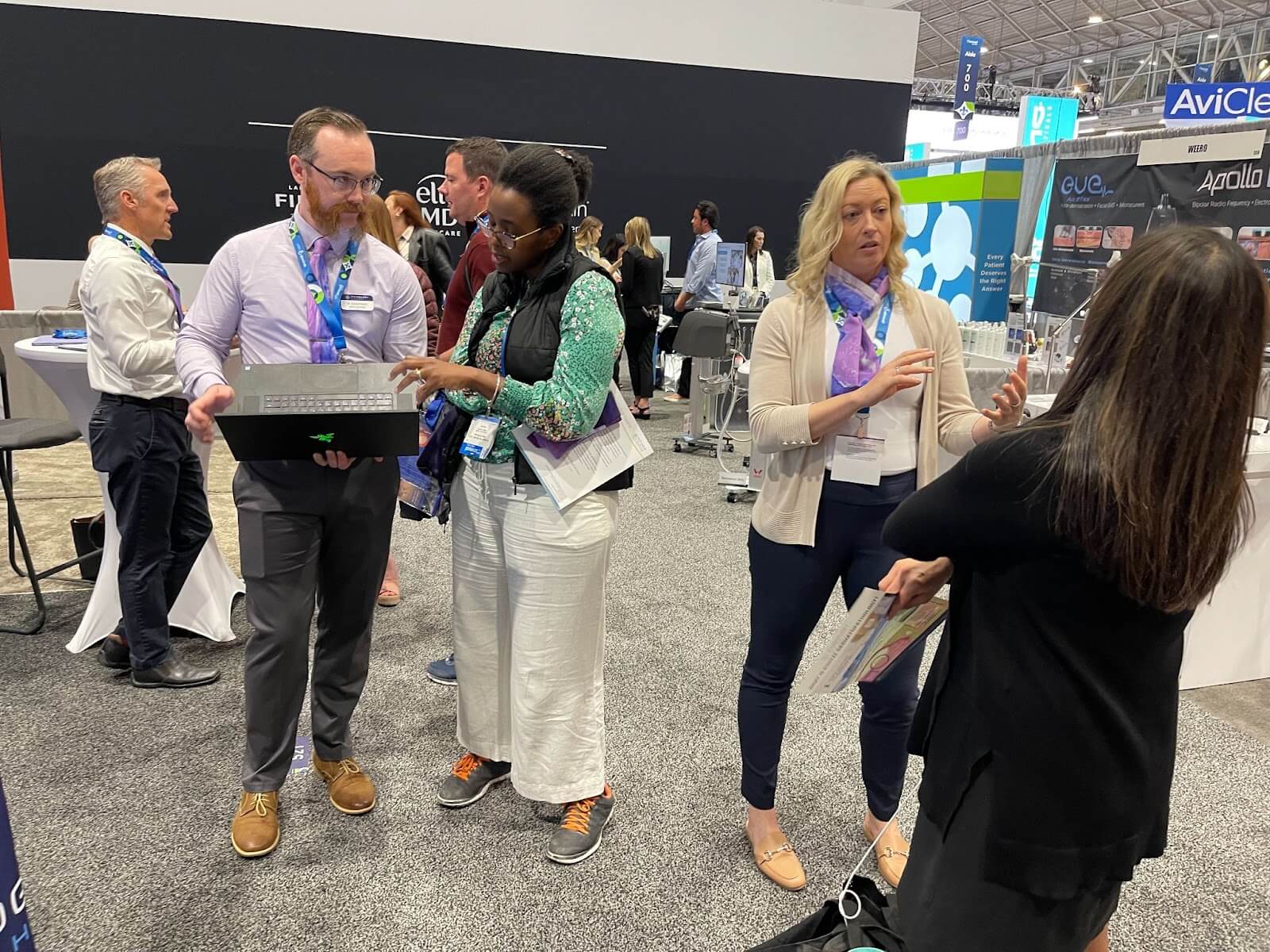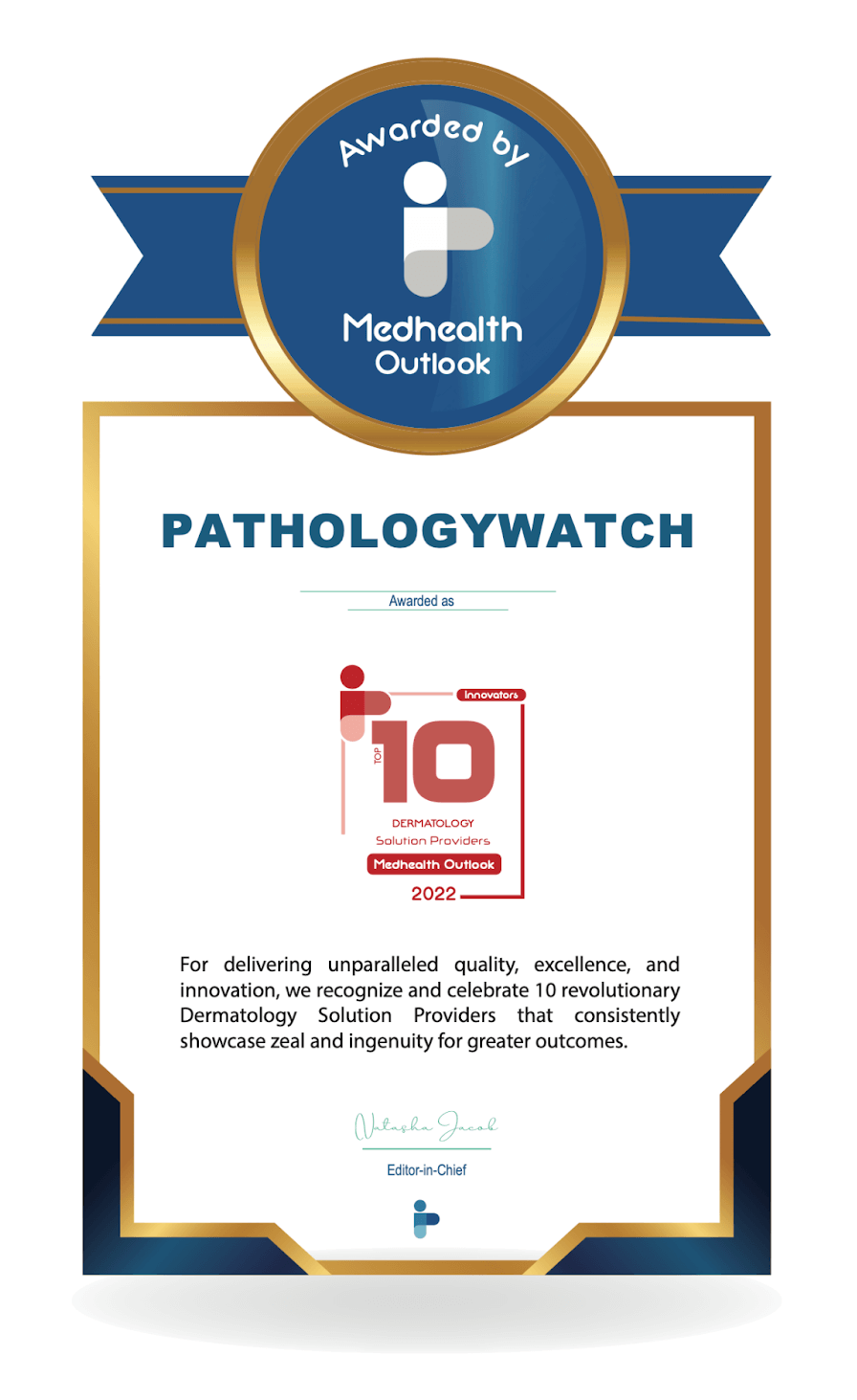Apr 19, 2023 | Press Release
New partnership will manage pathology workflows using a digital model
Omaha, Nebraska – The University of Nebraska Medical Center/Nebraska Medicine Department of Dermatology announced a partnership with PathologyWatch, a full-service pathology laboratory combining revolutionary digital technology with expert dermatopathology services to provide patients and doctors with an accurate and timely diagnosis. This new service aims to give Nebraska Medicine patients faster diagnoses and access to dermatopathologists anywhere.
“We are ecstatic at the med center to be partnered with PathologyWatch, experts in digital dermatopathology and artificial intelligence, to expand access to high-quality dermatopathology in our region,” said Ashley Wysong, MD, chair of the UNMC Department of Dermatology. “Specifically, dermatologists and primary care physicians will have access to our board-certified and fellowship-trained dermatopathologists at UNMC and PathologyWatch to improve patient care and diagnostic accuracy with quick specimen turnaround, digital images of skin biopsies integrated directly into electronic medical records, and opportunities to discuss challenging cases and clinicopathologic correlations with our dermatology-trained dermatopathologists. We are energized by this partnership with PathologyWatch and see many great things to come.”
Features and benefits of PathologyWatch include:
- Patient biopsies are prepared on slides and digitized;
- Dermatopathologists can read and interpret each specimen digitally ;
- Detailed reports are delivered electronically; and
- Dermatologists have quick access to communicate with dermatopathologists on interpretations.
Corey Georgesen, MD, assistant professor and director of dermatopathology at UNMC, will be the dermatopathologist entering the program. Dr. Georgesen is a board-certified and fellowship trained dermatologist, dermatopathologist and telemedicine specialist with Nebraska roots and diverse training experience. He will be working in collaboration with April Larson, MD, chief medical officer of PathologyWatch.
“This collaboration will foster forward-thinking and innovative diagnostic techniques for patients in the Nebraska and Midwest community,” Dr. Georgesen said. “Working together, we will utilize technological advances to analyze skin biopsies. Our symbiosis undoubtedly will translate into a model that will become a beacon for excellent and effective patient care. The future is bright.”
“We are very excited about this partnership,” Dr. Larson said. “Our goal to make life-saving diagnostic technology accessible and affordable is advanced in a meaningful way with our affiliation with the UNMC team. We are proud to partner with this state-of-the-art organization and look forward to providing these important services in the Nebraska area.”
For more information about PathologyWatch, visit pathologywatch.com or email. For media inquiries, contact Amy Cook at 949-813-0182 or via email.
To schedule a demo, contact Aaron Christensen via email.
###
About UNMC and Nebraska Medicine
We are Nebraska Medicine and UNMC. Our mission is to lead the world in transforming lives to create a healthy future for all individuals and communities through premier educational programs, innovative research and extraordinary patient care.
About PathologyWatch
PathologyWatch is the groundbreaking leader of digital dermatopathology services. Through these services, dermatology clinics, hospitals and laboratories can improve operational efficiency by speeding up workflow and enhancing patient outcomes by utilizing the PathologyWatch expert professional team and laboratory services. This can facilitate best-in-class reads and, in some cases, enable additional revenue to the practice by in-housing pathology. With an intuitive and easy-to-implement digital pathology solution that includes access to top-tier dermatopathologists and a streamlined clinical workflow that interfaces directly into the EMR, PathologyWatch brilliantly combines state-of-the-art technology and clinical decision-making to deliver unprecedented patient care.
Mar 27, 2023 | Digital Dermatopathology
PathologyWatch, the groundbreaking leader of digital dermatopathology services, has been chosen as one of a select group of 23 startups to participate in the global AWS Healthcare Accelerator: Global Cohort for Workforce.
This AWS Healthcare Accelerator is a four-week technical, business, and mentorship program for startups seeking to use AWS to improve healthcare workforce training, retention, and deployment. This opportunity, which begins in April and runs through the summer, will support PathologyWatch’s efforts to digitally optimize pathology workflows, providing tools that augment dermatopathology resources and interface directly with EHRs. PathologyWatch’s academic-level dermatopathologists can review and provide interpretations for digital slides remotely, supporting clinical decision-making while reducing costs and allowing workplace flexibility.
“We are honored to be one of a few companies chosen for the AWS Healthcare Accelerator program,” says Dan Lambert, CEO and cofounder of PathologyWatch. “Digital pathology is the key to providing quality healthcare solutions to so many underserved areas of the world, including the rural United States. Our mission at PathologyWatch is to leapfrog technology forward in the digital pathology space by connecting individual offices with dermpath experts throughout the world. We believe the AWS Accelerator program can help us in that journey.”
Curriculum of the AWS Healthcare Accelerator will offer opportunities such as hands-on AWS Cloud and technical training, mentorship from healthcare leaders, and exposure to AWS customers and members of the AWS Partner Network. PathologyWatch, which is seeking to advance solutions for addressing urgent challenges facing the healthcare workforce, will also receive AWS computing credits and opportunities to speak with investors and industry experts, including at a Demo Day, where PathologyWatch’s solutions will be showcased.
“Solutions to help clinicians as well as other office and technical staff in healthcare are needed urgently and globally,” says Dr. Rowland Illing, chief medical officer and director of International Public Sector Health at AWS. “We know that advancing cloud- and technology-enabled approaches can alleviate some of the burden, and we’re proud to be convening standout startups and healthcare leaders in this first-ever global Accelerator to do that.”
“We do a significant amount of AI and deep learning research on AWS. They’ve been a great partner,” says Lambert. “The sample volume that we process daily has gone up almost 200% over the past couple of years, and AWS has been able to scale with us. It’s nice having a flexible on-demand hosting solution available immediately.”
Healthcare workforce shortages are at crisis levels, driven by burnout, shrinking budgets, and the aftermath of a worldwide pandemic. A shortfall of 10 million healthcare workers is forecast by 2030. As a result, patients may go untreated or experience delays in care, and healthcare workers need support now more than ever.
In the field of pathology, there is a significant shortage of qualified pathologists, both in the US and worldwide. PathologyWatch is using digital tools to help cover this physician gap, allow pathologists to work remotely, and reduce burnout.
For more information on the AWS Healthcare Accelerator, visit alchemistaccelerator.com/AWS-Healthcare-Accelerator.
Mar 21, 2023 | Digital Dermatopathology, Digital Pathology, Meet The Team, Pathology Business
We had a wonderful time at AAD’s annual conference held last weekend in New Orleans. With 8,500 health care professionals and over 16,000 total registrants, The Big Easy was bustling with the latest in pathology resources and expertise.
Here are a few of the highlights from the PathologyWatch team:
This year’s booth enjoyed a vibrant stream of dermatologists who were interested in learning about dot., the dermpath virtual assistant that helps derms to manage case workloads, view digital images and case files, create detailed pathology reports, and collaborate with colleagues.
Dr. Cacey Peters was on hand to demonstrate how dot. makes reviewing and annotating digital slides a snap for Derms and DermPaths. He also met with more than a few starstruck fans of his popular #GettingUnderYourSkin social media videos.
Though it isn’t polite to brag, we put our best foot forward by producing the show’s most memorable swag: custom socks featuring verruca vulgaris histology. That’s right, we gave warts to hundreds of happy derms.
In addition, a hot pot of Starbucks coffee is just what the doctors ordered to stay alert and keep their eyes on the prize.
Friday evening we hosted our infamous annual AAD happy hour at Rosie’s On The Roof, which is located on top of the historic Higgins Hotel. Hundreds of Derms braved stormy conditions to join us for a classic fais do-do with bottomless hors d’oeuvres and drinks.
Falling on St. Patrick’s Day, the place was packed with festive pathologists looking to let off a little steam and socialize between conference sessions.
The patio’s city views offered the perfect location to reunite with familiar faces and make new friends.
At the end of the night, we gave away special edition “Show Me Some Skin” T-shirts, with the words “Don’t Worry, I’m a Dermatologist” emblazoned on the back. Based on the frenzy they created, the shirts will definitely be returning for AAD in San Diego 2024.
We also handed out custom Mardi Gras beads to get everyone in the spirit of the city’s rich traditions.
Looking back at our experience in New Orleans, we couldn’t be happier to be a part of this inspiring community. It was a joy to meet, answer questions, and share our vision with so many talented Derms.
2023 promises to be a herald year for PathologyWatch, our customers and partners as we continue making great strides in the development of technology and workflows that enhance patient outcomes.
Mar 8, 2023 | Pathology Business
Slice of Healthcare honors PathologyWatch CEO for innovative and influential leadership in digital health space.
SALT LAKE CITY (PRWEB) MARCH 07, 2023
Dan Lambert, CEO and cofounder of PathologyWatch, a full-service digital dermatopathology solution, was named one of the Top 35 Digital Health Leaders by Slice of Life Healthcare in its first annual list celebrating the most innovative and influential leaders in the digital health industry.
Slice of Healthcare is a top healthcare media company that produces and manages over 15 podcast shows featuring pivotal healthcare leaders as guests. Fundamental factors considered in selecting the top 35 honorees include their impact on the industry, outsider conversations, funding, partnerships signed, customers signed, experience, role and whether or not they exhibit the ever-elusive “it” factor.
“I am thrilled to be selected for this honor, but even more importantly, I’m excited for the recognition it brings to our mission at PathologyWatch,” said Lambert, who cofounded PathologyWatch in 2017. “Our goal is to bring truly life-saving technology to billions of people who might otherwise never have access to this level of healthcare. We have become excellent at one field of pathology by staying very focused on the study of skin cancer. The current and future capabilities of our single-solution system are very exciting, and we’re appreciative to be recognized by Slice of Healthcare.”
After receiving a degree from BYU in computer engineering, Lambert earned his MBA from Harvard Business School. A former executive at IBM, he has led multiple successful ventures and company exits to private equity. In 2018, Lambert was named an Inc 500 CEO for his work on BoardVitals, a medical education company.
“At PathologyWatch, Dan’s leadership style enables us to stay very focused on what we need to be doing to fulfill our mission,” says Michael Torno, Chief Revenue Officer. “It’s easy in a startup to go down all sorts of avenues and try to address everything all at once, because you see so many possibilities. What Dan does as a leader is keep us very engaged in doing something very, very well. It’s just crazy what he’s doing, and what he’s already done and accomplished. This latest recognition is well earned.”
The Slice of Healthcare Top 35 Digital Health Leaders list was compiled after an extensive internal and external research process that spanned more than six months. The final list showcases some of the industry’s most accomplished leaders in the digital health realm. Honorees include Chief Executive Officers, Chief Medical Officers, serial entrepreneurs, first-time founders and seasoned leaders.
“We are super excited to announce our first annual Top 35 Digital Health Leaders list,” said Jared S. Taylor, founder of Slice of Healthcare. “These leaders are making strides in digital health and adjacent areas, which is no easy task. We are proud to recognize their contributions and to bring attention to their innovative work.”
For more information about Slice of Healthcare and the 2023 Top 35 Digital Health Leaders, please visit sliceofhealthcare.com. For more information about PathologyWatch, visit pathologywatch.com.
About PathologyWatch
PathologyWatch is the groundbreaking leader of digital dermatopathology services. Through these services, dermatology clinics, hospitals and laboratories can improve operational efficiency by speeding up workflow and enhancing patient outcomes by utilizing the PathologyWatch expert professional team and laboratory services. This can facilitate best-in-class reads and, in some cases, enable additional revenue to the practice by in-housing pathology. With an intuitive and easy-to-implement digital pathology solution that includes access to top-tier dermatopathologists and a streamlined clinical workflow that interfaces directly into the EMR, PathologyWatch brilliantly combines state-of-the-art technology and clinical decision-making to deliver unprecedented patient care.
Feb 7, 2023 | Digital Pathology
As the global demand for dermatology solutions has increased, PathologyWatch has been at the forefront of serving both patients and clinicians through innovation in digital dermatopathology. By providing benefits like increased efficiency, enhanced patient care, and new opportunities for revenue growth, PathologyWatch is recognized for transforming the dermatological experience for providers and patients alike.MedHealth Outlook recently ranked PathologyWatch as one of the top 10 dermatology solution providers across the globe. In its feature, CEO Dan Lambert shares how PathologyWatch is helping reduce the cost of pathology while creating better patient care across the country. Read on for key highlights, or visit this link to read the full article.
The Need for Digital Transformation
Simplifying the clinical workflow results in optimal clinical decision making and enhanced patient care. Without a computerized pathology platform, hospitals and dermatology clinics miss out on increased efficiency by sharing digital histologic slides and direct interaction with the preferred EMR.
PathologyWatch provides this increased level of care and efficiency not only through its digital tools but also its network of academic-level dermatopathologists and expert consultation. With around-the-clock access to knowledgeable telepathologists, hospitals and clinics can rely on PathologyWatch for expert locum tenens support at any time. By saving both time and money with PathologyWatch, healthcare providers can better position themselves for whatever the future may hold.
How Do Digital Pathology Services Work?
By combining the knowledge and technology of an academic center with the efficiency and customer service of a private lab, PathologyWatch helps labs embrace digital transformations quickly and keep everything functioning efficiently. Within just three to six months, PathologyWatch and its team of experts can help clinics complete this transition and manage digital pathology diagnostics in a wide variety of subspecialties.
To continue helping patients receive faster diagnoses and equal access to dermatopathology services while empowering laboratories, PathologyWatch is pursuing expanding its reach with artificial intelligence. This tool will provide even more value to PathologyWatch’s services, which already include completely integrated EMR reporting and round-the-clock access to digital slides. Thanks to PathologyWatch’s end-to-end solution, dermatologists now have access to an effective integration of EMRs, laboratory information systems, scanners, and digital viewer technologies.
PathologyWatch in Action
PathologyWatch’s partners that digitize consistently report a net positive return on investment. When facing challenges related to understaffing, overflow volume, or difficulty managing rural operations, providers turn to PathologyWatch for help.
Cedars-Sinai Medical Center is a classic example of how PathologyWatch provides value to its clients: Wanting to grow its outreach, Cedars-Sinai partnered with PathologyWatch for novel growth solutions in a new demographic, access to experts, and broad insurance coverage.
However, Cedars-Sinai isn’t the only clinic that has been transformed by PathologyWatch. “We are honored that of all the digital dermpath labs available, dermatologists are increasingly choosing to partner with us,” says Lambert. ”As digital dermatopathology begins to grow, it has the potential to reduce the costs of pathology by billions while creating better patient care for everyone across the country. We’re thrilled to be winning so much volume so quickly.”
To read the full article, click here.

